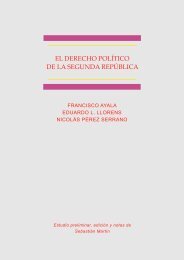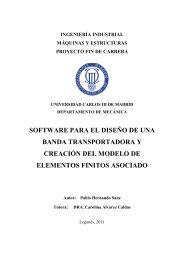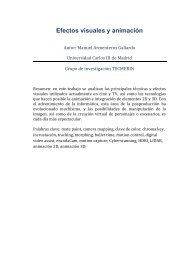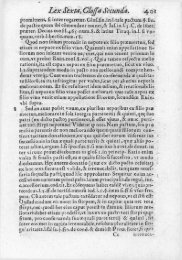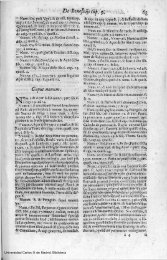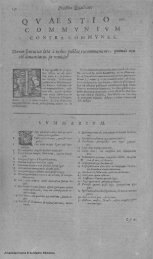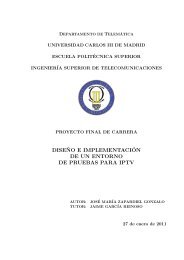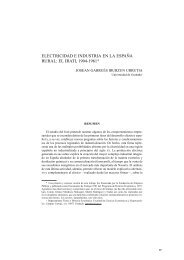Land tenure inequality, harvests, and rural conflict ... - e-Archivo
Land tenure inequality, harvests, and rural conflict ... - e-Archivo
Land tenure inequality, harvests, and rural conflict ... - e-Archivo
Create successful ePaper yourself
Turn your PDF publications into a flip-book with our unique Google optimized e-Paper software.
Mainstream narratives of the causes of <strong>rural</strong> <strong>conflict</strong> in 1930s Spain have<br />
focused especially on the South of Spain, where <strong>inequality</strong>, l<strong>and</strong>lessness <strong>and</strong> poverty<br />
were endemic. There, it is argued, <strong>conflict</strong> was particularly acrimonious given the<br />
privileged position of the l<strong>and</strong>owning elites pitted against a mass of desperately poor,<br />
illiterate l<strong>and</strong>less laborers. Classic accounts of <strong>rural</strong> unrest in interwar Europe depict<br />
inequal power relations <strong>and</strong> exploitation by the owners of l<strong>and</strong> as the pre-conditions<br />
for <strong>rural</strong> polarization <strong>and</strong> <strong>conflict</strong>. An exogenous shock like the First World War or<br />
the Great Depression brought such an unstable system to <strong>conflict</strong> <strong>and</strong> collapse (for<br />
example, Snowden, 1986: 33-34; Snowden, 1989: 150-57). In the case of Spain,<br />
employers’ boycott practices, poor wheat <strong>harvests</strong> <strong>and</strong> a reduction in agricultural<br />
output caused unemployment <strong>and</strong> falling living st<strong>and</strong>ards, resulting in <strong>conflict</strong> <strong>and</strong><br />
polarization.<br />
However, narratives emphasizing explotation <strong>and</strong> falling living st<strong>and</strong>ards do<br />
not square with the existing evidence: <strong>inequality</strong> fell quickly in the period (Prados de<br />
la Escosura, 2008), poor wheat <strong>harvests</strong> in 1931 <strong>and</strong> 1933 alternated with<br />
exceptionally good <strong>harvests</strong> in 1932 <strong>and</strong> 1934, olive-growing areas also experienced<br />
high levels of <strong>conflict</strong> <strong>and</strong> did not experience similar levels of output volatility,<br />
seasonal unemployment was not a new phenomenon in <strong>rural</strong> labor markets in dryfarming<br />
areas of Spain, <strong>and</strong> real wages in agricultural labor markets held up pretty<br />
well in the 1930s (Domenech, 2013). This paper aims at subverting mainstream<br />
narratives of <strong>rural</strong> <strong>conflict</strong> during the 2 nd Republic by analyzing in detail the pattern of<br />
<strong>conflict</strong>s in Andalusia, concentrating on the very active provinces of Córdoba, Jaén<br />
<strong>and</strong> Seville (see map 1).<br />
3



